So you want to buy a Triple-M Car Part 3 – The Magnas and Magnettes
By Philip Bayne-Powell
F-type Magna
This was the first 6-cylinder overhead cam model of the Triple-M era. The 4-seater (F1) came out in 1931, when the M and D-types were still being sold, and the model carried on to 1933. The 2-seater (F2) was added to the range in September 1932. The 4-seater was priced at £250, with the salonette at £289, an increase of £40 over the D-type, which was good value. The engine is a non-cross flow 1271cc motor, which was virtually the Wolseley Hornet engine, and was reputedly bought by Cecil Kimber from Wolseley for the sum of £5 each, as they were going over to a chain driven overhead camshaft.
The engine is very torquey, but runs out of revs above 4000rpm, but they are a true sports car with excellent road holding, and great fun to drive. The radiator was revised and sloped back, which together with the long bonnet gave a very sporting look. These were the most numerous six cylinder Triple-M cars made, with a 1250 total of all versions, of which 390 were salonettes – a high proportion.
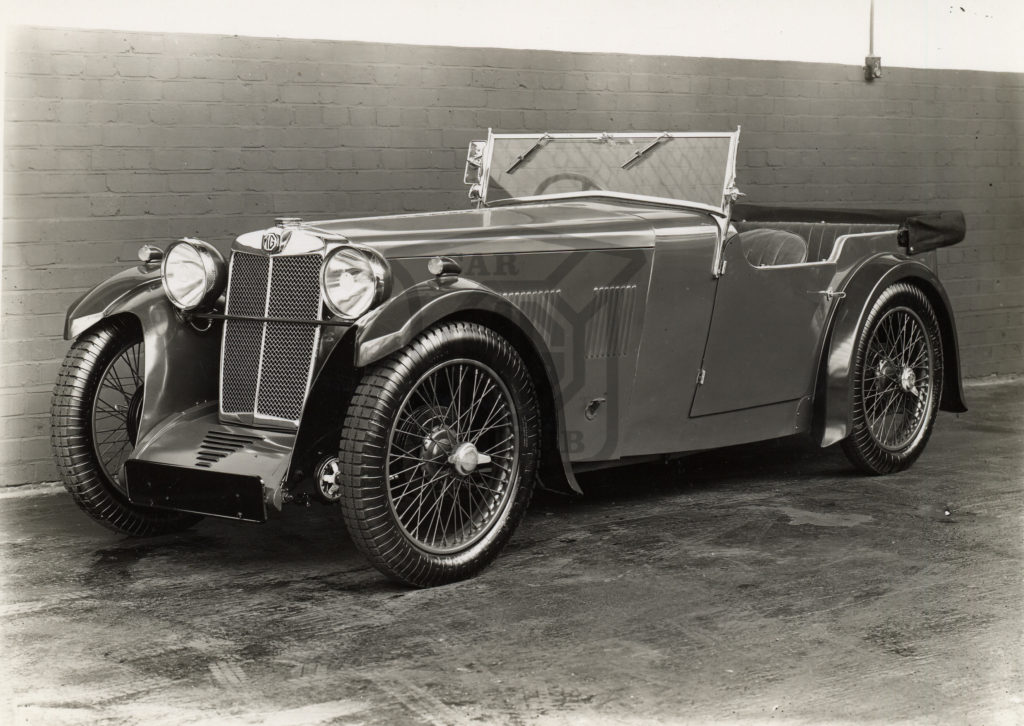
This car was very popular with the trials fraternity, probably because of its good torque characteristics. F-types were entered in the 1932 Monte Carlo Rally, the Mont des Mules hill climb, and the Alpine Trial, where W.E.C Watkinson won a Glacier Cup.
Chassis
This is of similar construction to the D-type, with channel side members connected with rivetted crosstubes. The track is the same 3ft 6ins, but the wheelbase is longer at 7ft 10ins, to accommodate the 6-cylinder engine. The brakes are still the small 8” brakes carried over from the M and D type, although they were increased to 12” diameter for the later two-seater F2, and F3 models.
Quite a few of the F1 4-seaters have been rebuilt with the later 12” brakes, which certainly improve the stopping power, although being a light car, at 15cwts for the four seater, it didn’t take too much effort. A test car stopped from 30mph in 30 feet, which is pretty respectable. Like all Triple-M cars the brakes need to be constantly checked and adjusted to achieve good braking results. The nice Adamant steering box was also carried over from the previous models.
Engine
This initially produced 37 bhp, a bit less than the 50% more that you would expect from having 50% more cylinders than the D-type, however later engines were improved to give a decent 47bhp. Twin 1” SU carburettors were fitted to a combined inlet/exhaust manifold on the nearside. The carburettors were still the unreliable bottom fed bowl variety, with the float operating a needle valve which either sticks or doesn’t seat properly; these are best changed for a later top fed bowl. The valve gear was carried over from the M and D-types, but power was badly restricted by pedestrian valve timing, with an inlet opening 9 degrees after TDC (even the M and D-types had their inlet valves opening at TDC).
This is easily rectified by fitting a replacement camshaft with the 12/12 valve timing, which was used in the later F-types. The crankshaft runs in four main bearing, making it a sturdier crank than the 4-cylinder cars before, (which only had 2-bearing cranks), and so crank breakages on these cars is pretty rare. The original duralumin con rods are a weakness of this engine, but can be changed for Ford E93A rods; later engines were fitted with the stronger steel J-type rods. An oil filter was still not provided, there only being a coarse gauze filter in the sump. A water pump was also not provided, so various modern in line pumps have been used as a modification to help keep the engine temperature under control.The head gasket on these engines is another weakness, with blowing between cylinders number 3 and 4 occurring pretty regularly.
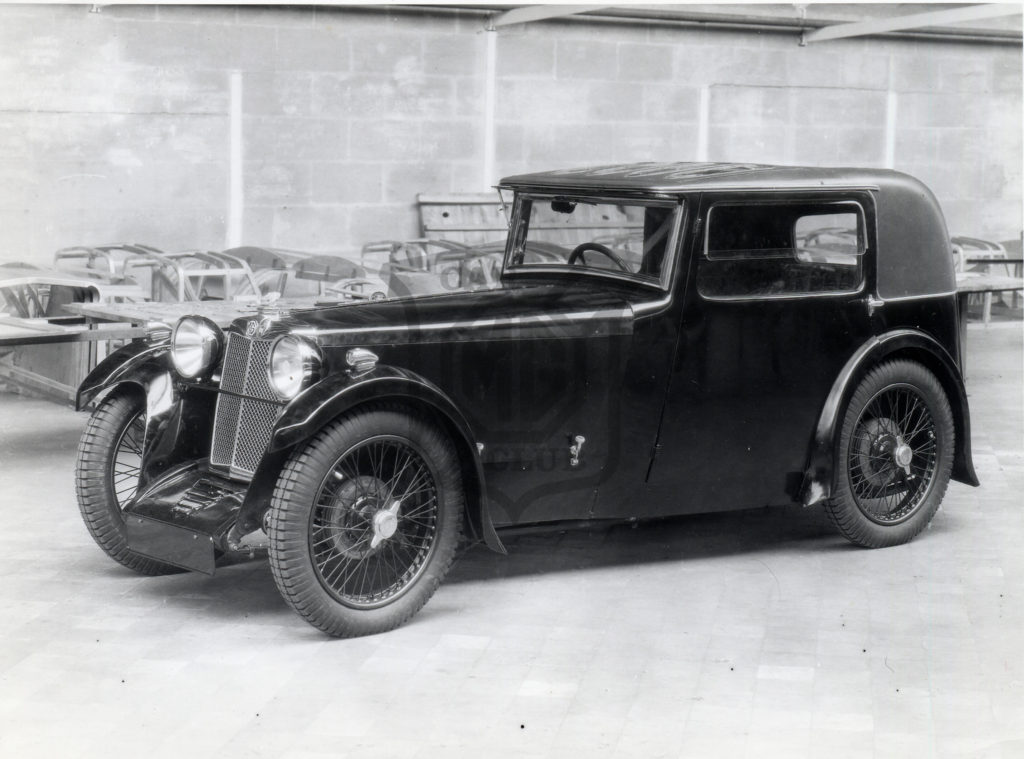
These engines were original fitted with steel side plates bolted to the block, to hide the fact that it was a Wolseley unit. However these caused the engine to overheat and were thrown away early on! You are not recommended to refit them, even for originality reasons!
A fan was also provided to assist cooling; this model being the only Triple-M car to have a fan as standard – some other models had the option of a fan for overseas delivery, which is why a pulley is often found on the front of the crank on some cars.
The 2-seater F3 version was fitted with improved water cooling, with an extra manifold collecting water from the offside of the head, which fed into a second pipe in the radiator header tank; this can be reproduced these days to help keep the earlier engines cooler.
Gearbox
The gearbox is a 4-speed ENV unit supported off the back of the engine, like the early models. It is a beautifully made unit, producing some of the best Triple-M gear changes. “Like a knife through butter” is the usual phase used. It takes some getting used to, as the gears are the opposite way round, with 2nd and 4th gear pushed away from you. A cast aluminium gear lever remote control was fitted and also supported the control rods for the choke and slow running, all nicely to hand.
Back axle
The casing is the same as the D and J-types, with U-bolts holding it down to the springs. However the diff ratio was upped to 4.78, using a 9/43 crown wheel and pinion, which is no longer available; an 8/39 is the nearest available equivalent (at 4.875) and has stronger teeth as well. The diff carrier was still in aluminium, but the stronger steel carriers are better. Oil seals at the outer ends were still felt, but later hubs with lip seals can be fitted, if oil is leaking into the brake drums.
Electrics
These were now the standard 12 volt set-up. The SU Petrolift fuel pump was still fitted and, as with the early 4-cylinder cars, is best replaced with the later L-type SU pump. A manual advance and retard lever was fitted for the distributor, although later distributors are fitted with automatic centrifugal advance. The fuse box was much improved with four fuses, including the dynamo field fuse. Originally the windscreen wiper was a vacuum operated one, which is not very effective or popular, and nowadays is almost universally replaced with an electric Lucas unit. The headlights were 8” Rotax units which look very nice, but are difficult to get hold of these days
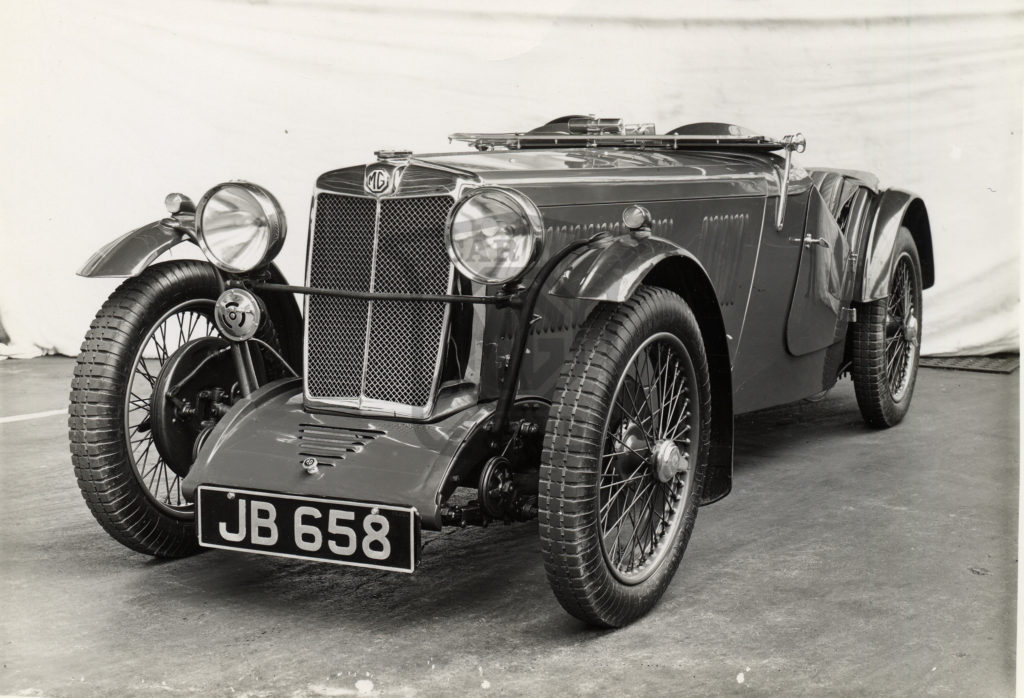
Body
The F1 was the designation for the 4-seater and salonette, both of which were fitted with “helmet” style wings, whilst the F2 was the 2-seater version, with the later half-round cycle wings, twin scuttle humps, cut down doors and slab tank. An F3 4-seater was also produced from early 1932, with the bigger 12” brakes. Unfortunately, the salonette bodies were not very well designed, and so started breaking up early on, and like many pre-war saloons were replaced by open bodies. The works even offered to replace the salonette body with a 4-seater body for the sum of £100!
As a result very few of these pretty cars remain. 188 chassis were also sold for coachbuilt bodies to be fitted; Jarvis, Abbey and Styles produced some very elegant bodies on these cars; the longer wheel base, and more powerful engine helping to make these cars a worthy purchase. A handful of each of these are still preserved. The dashboard had a speedo and ammeter, supplemented by a “Maltese Cross” oil pressure gauge. This consisted of 4 open segments behind which a red and white disc rotated, to indicate no pressure (red) or some unknown pressure (white). These may be original but give little indication of the state of the oil pressure, which should be 40-60psi when hot; so many have been changed for an oil gauge with a conventional dial.
Prices
These cars have been rather neglected by collectors, but the word is now getting round that these are quite nice cars in their own way. They handle well, steer well, and even stop pretty well; also there is more room for luggage even in the 2-seaters. Prices generally tend to be over £20,000 for a good example, but it is important to find out what has been done to the engine, as this could be expensive if not sorted. Prices for the special bodied cars are nearer £30,000.
K-type Magnette
This was first seen at the 1932 Motor Show, and was called a Magnette, because with an engine capacity of 1087cc, it wasn’t as big as the F-type Magna. It was intended to fill the gap between the J-type and the F-type, which was still in production. The designation of these cars is most confusing even to Triple-M people. The body styles were a 4-seater open, and a pillarless saloon, called the K1 (at £385 and £445 respectively), based on a long, 9 foot wheelbase chassis, a two seater called the K2 (at £320), and the supercharged racing version called the K3 (originally at £695 and later at £795); all pretty similar to what had been used before.
However there were three different engines, the KA which produced 39bhp, the KB producing 41bhp, whilst a 1271cc KD engine was later introduced in 1933! The KA was fitted with a mild camshaft to produce better torque for the engine to be fitted in the saloons, whilst the KB engine went into the two- and four-seaters. In 1934 the KN was produced with the later N-type engine fitted into the saloon only, and with 56 bhp was able to give the car a better turn of speed.
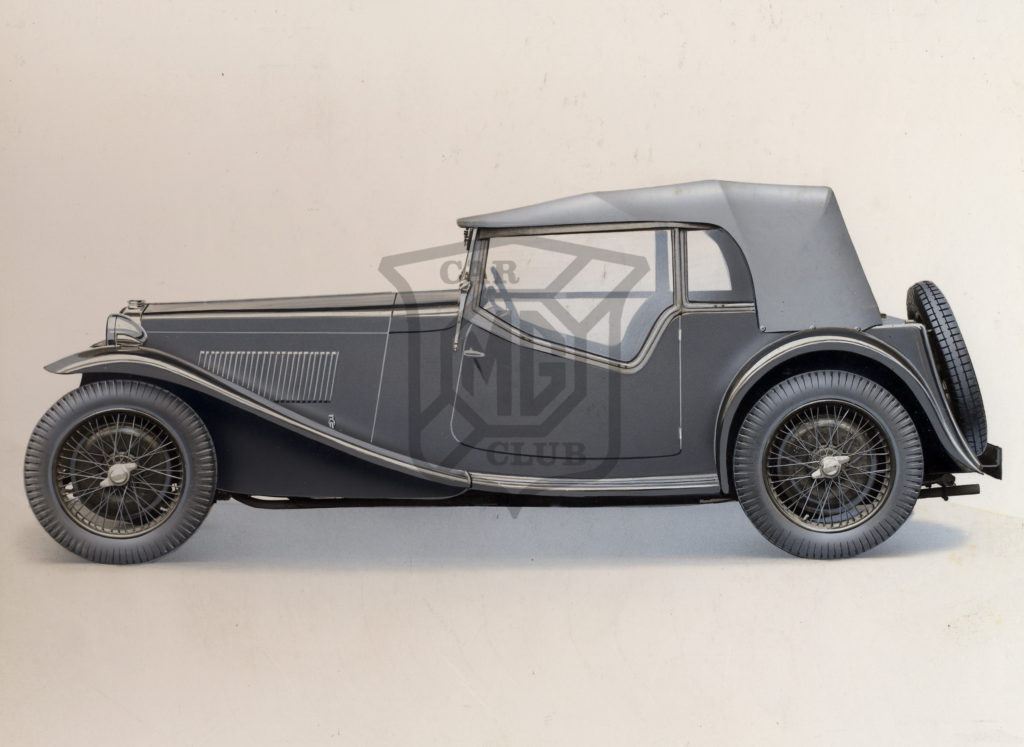
The 4-seater cars were pretty pedestrian, but the 2-seater K2 was a fast, competent, road car, while the K3 road and race car was a revelation. It was very fast for an 1100cc motor, handled very well and stopped very quickly. It was an immediate success winning the team prize in the 1933 Mille Miglia – the first time it had been done by a team outside Italy. On the track these cars were formidable, and soon competitors worldwide wanted one from George Eyston to Whitney Straight. In the end 33 were built, but nowadays there are even more, some built on crashed original chassis, but others built up from a K1 tourer.
Chassis
This was a much sturdier job with deeper side members and larger cross tubes. The track was widened to 4ft, and the saloons and tourers had a 9 foot wheelbase, while the 2-seaters (K2 and K3) had a wheelbase of 7ft 103/16”. The K3 additionally had an X-shaped channel bracing behind the gearbox. The brake drums were now 13” diameter and in Electron with steel liners to keep the weight down.
The same braking system with sleeved cables running off a central cross shaft was retained, although the later K3s used twin lever brakes operated by the inner cable pulling and the outer cable pushing the two levers together; this gave a better balance to the brake shoes, which were therefore always in contact with the drums when applied. A special divided track rod system was used with a central pivot fixed to the front axle; this was designed so as to eliminate kick back into the steering wheel.
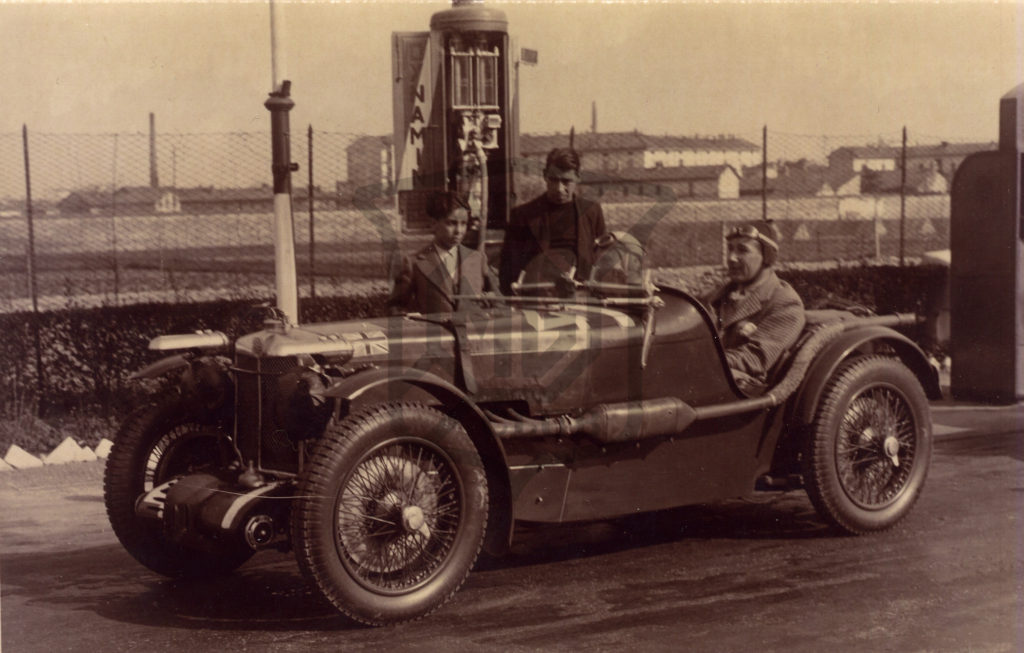
Engine
This was a brand new design from the MG design office, with a stronger bottom end with four larger main bearings. It used steel conrods with fully floating gudgeon pins, instead of the clamp bolt little ends of the F-type, and was designed to rev to 6000rpm, due to the short stroke of 71mm, much less than any other engine of the period. The cross flow cylinder head was completely new, with triple carburettors on the offside, and twin three branch exhaust manifolds on the nearside.
The camshaft and rockers were changed to bigger items less likely to suffer from the wear that occurred with the smaller camshafts. The water manifold on the nearside collected hot water from directly opposite the exhaust valves, thus ensuring that the engine did not suffer the overheating of the F-type. An oil filter was now fitted, on the nearside of the block, and a skew gear on the offside drove the plinth mounted BTH magneto. The KA engine used in the saloons produced only 39bhp due to mild camshaft timing; the KB engines used in the 2 and 4-seater tourers had better valve timing giving 41bhp.
A later engine, the KD, had an increased capacity of 1271cc engine due to a longer stroke; this was fitted with twin SU carburettors. In this form it produced 48bhp, and was fitted to all the road cars; The K3 retained the 1087cc engine to keep within the 1100cc class for racing, and was supercharged with a front mounted Powerplus No.9 blower, driven by a quill shaft and a constant velocity joint off the front of the crankshaft. During 1933, a revised inlet manifold was introduced, using twin carburettors, following experience from racing. The KN had the N-type engine with better breathing due to revised porting, retaining the twin carburettors, placed in the optimum position, nearer to cylinders No 1 and 6.
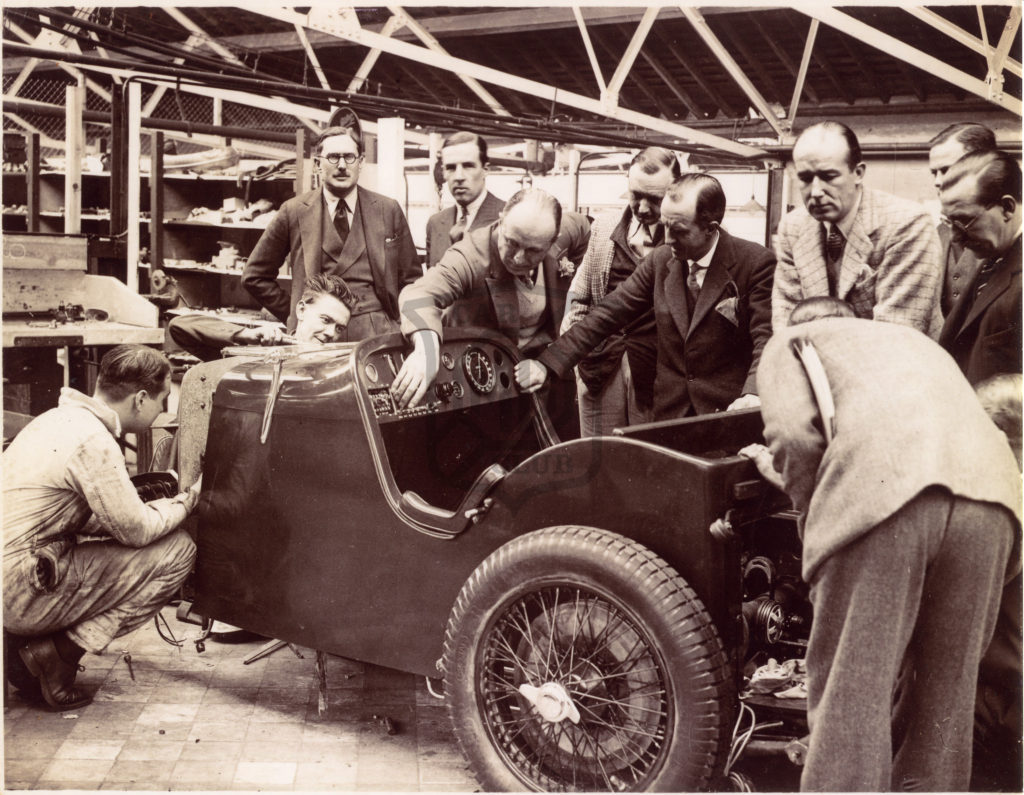
Gearbox
A new ENV pre-selector unit was introduced, which enabled changes to be selected before they were needed, and only brought into operation when the clutch pedal activated it. It was standard on the saloons, and the K3, but could be fitted to the 2 and 4-seater cars at an extra cost of £25, and most of these seem to have been fitted with this unit. It is quite a complicated unit and really needs to be overhauled by someone who knows about them. The cone of the first gear is of a small diameter, and can cause clutch slip if abused. However, it is a delightful box, once the discipline of remembering to select the next likely gear after changing; this allows one to change down from top to produce an instant power surge from 3rd gear for overtaking on the road.
Back axle
This is a special and bigger unit than before, and is not interchangeable with any of the other models, being derived from the Wolseley14, rather than the Morris Minor. The standard models had a 9/52 diff, while the K3 had a choice of 9/39, 9/44 or 9/52.
Electrics
These were much the same as the F-type. However the dynamo was now a bigger Rotax unit in two halves with the top half cast in aluminium, and fitted onto a cast steel bottom half. The top section is apt to break and brass replacements have been made up in the past. The sidelights were cast octagonal units instead of the pressed metal ones on the F-type, although the K1 would appear to have the round lights to start off with. A special octagonal switch panel was fitted to the dash with the ignition switch in the middle, and dash lamps and their switch. There was a special lock on the ignition switch which prevents the lights from being switched on (or off) when the ignition is switched off – this can lead to breaking the Bakelite light switch if forced. The wiper motor was changed for an electric one at last.
The K3 had a completely different dash arrangement, with the fusebox mounted there, so that the fuses could be changed whilst on the move (by the passenger of course!); the dash also was fitted with switches for nearly every item!
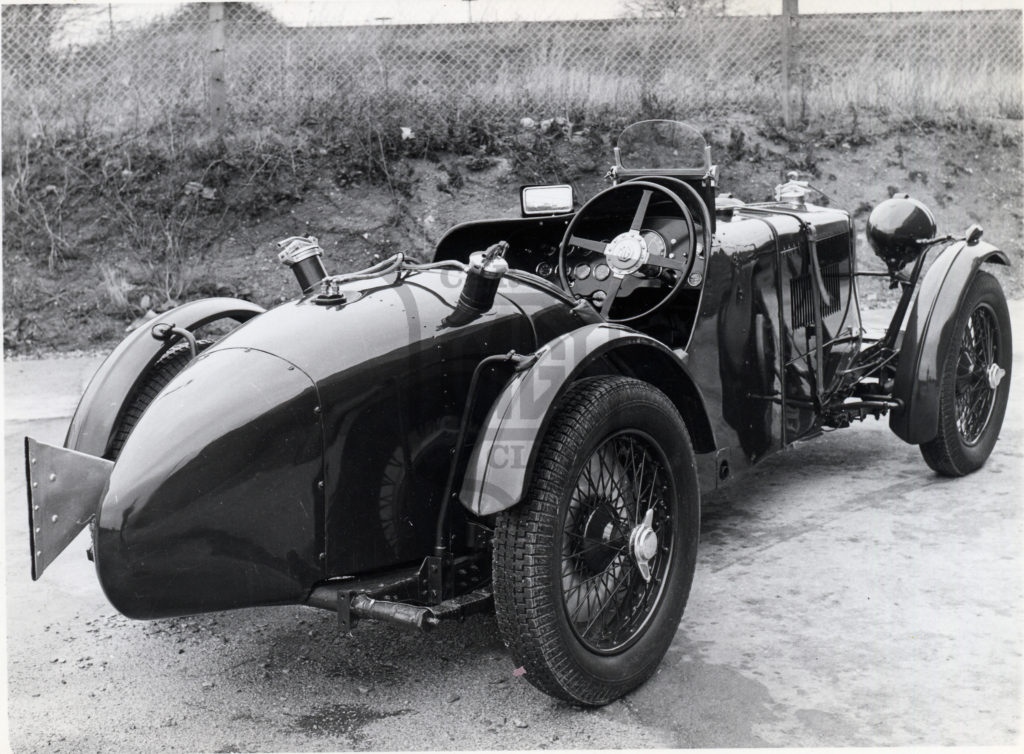
Body
The K1 had either an open 4-seater body or a pillarless saloon body weighing in at over one ton. These saloon bodies were very weak, as there was no door pillar between the front and rear doors, although steel reinforcing was built in above the doors. With both doors open the whole of the car interior was visible and accessible. Because of the inherent weakness of these timber-framed bodies, not many of these saloon bodies have survived, and, being difficult and expensive to restore, have been thrown away and a replica K3 body put on instead. Later KN saloons had the same body as the K1, and some left over 4-seater open cars were fitted with an N-type engine and gearbox, and sold through University Motors as their Speed Model.
The 2-seater K2 body with its swept front wings and running boards is very attractive; some cars have been fitted with cycle wings, which, I am sorry to say, ruins the lines of this relatively big car.
Two-tone colour schemes were brought in with the body being in the lighter shade and the wings in the darker colour.
The first K3s were fitted with a slab tank timber-framed body, skinned in aluminium, which weighed 181/4 hundredweight; many were sold as “bare” chassis to be fitted out by their owners with bespoke racing bodies. In 1934 cars were treated to a pointed tail body, which was ½ a hundredweight lighter. Both versions could be fitted with full road equipment, making them nowadays a very desirable motor car, which can be used on road or track. I used to drive my K3 to and from race meetings, and raced with full road equipment. In fact few were sold road-equipped, as a discount on price could be had.
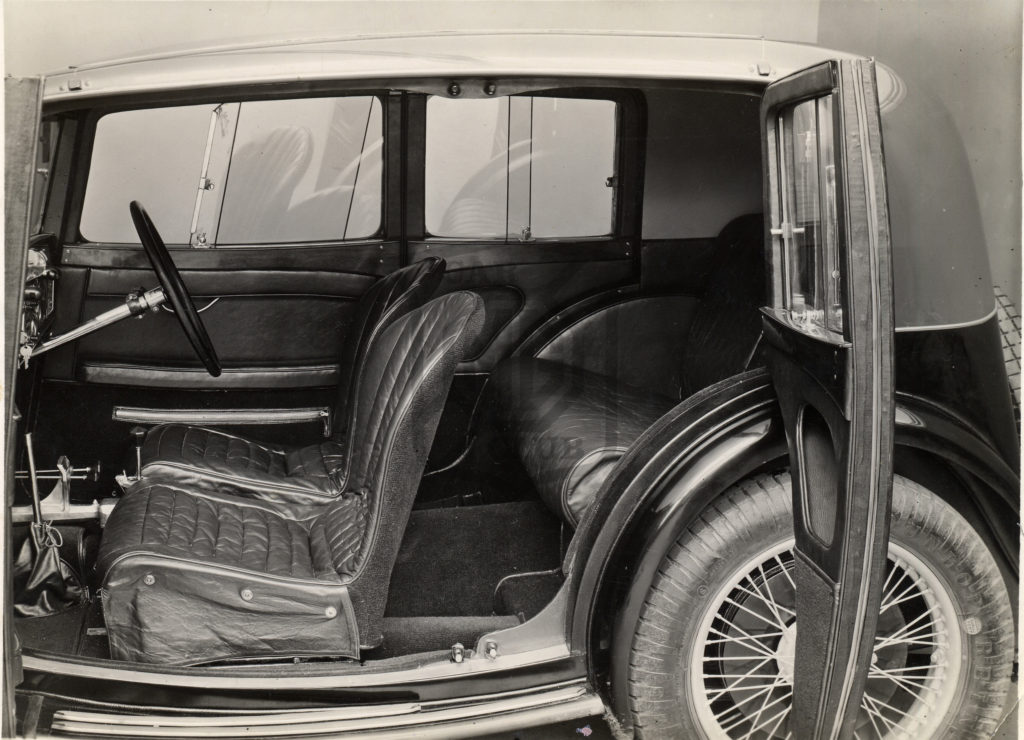
Prices
The K1 tourer and saloons are not that popular being so pedestrian, but with only 171 built they are not very common and so the prices are around £30,000. The KN Pillarless saloon is likely to fetch £40,000 due to just a few survivors. The KN University Motors Speed Model is a useable car and would cost over £40,000. The K2 is a rare beast, as only 20 were built, and commands prices of around £60,000. The epitome of Triple-M motoring is the K3, and the price for one of the 33 original ones is now well over £200,000, dependent on the provenance. A K3 replica can be had for a lot less, and gives virtually the same feel and performance; these can be had for around £70,000.
L-type Magna
This 1086cc six-cylinder car came out in March 1933, and was an all round great improvement on the F-type, with a new cross flow head, bigger camshaft and rockers to reduce the wear experienced on the F-type, and the bigger 12” brakes used on the later F-types. It still used the same track as the Midgets but with a longer wheelbase, at 7ft 103/16”. The prices were more than the F-type, with the 2-seater costing £285, while the 4-seater was £14 more expensive; the salonette was £345 and the Continental Coupe was £350.
The two-seater body (the L2) was similar to the J2, with a slab tank and spare wheel mounted at the back and a longer bonnet to accommodate the 6-cylinder engine. The four-seater body (the L1) was a bit disappointing, with a half height triangular petrol tank tucked under the spare wheel. The radiator was the sloping one used on the F-type, and made the car look very handsome. The windscreen folded down, like on most Triple-M cars, and the cycle wings of the F-type were replaced with long swept wings and running boards.
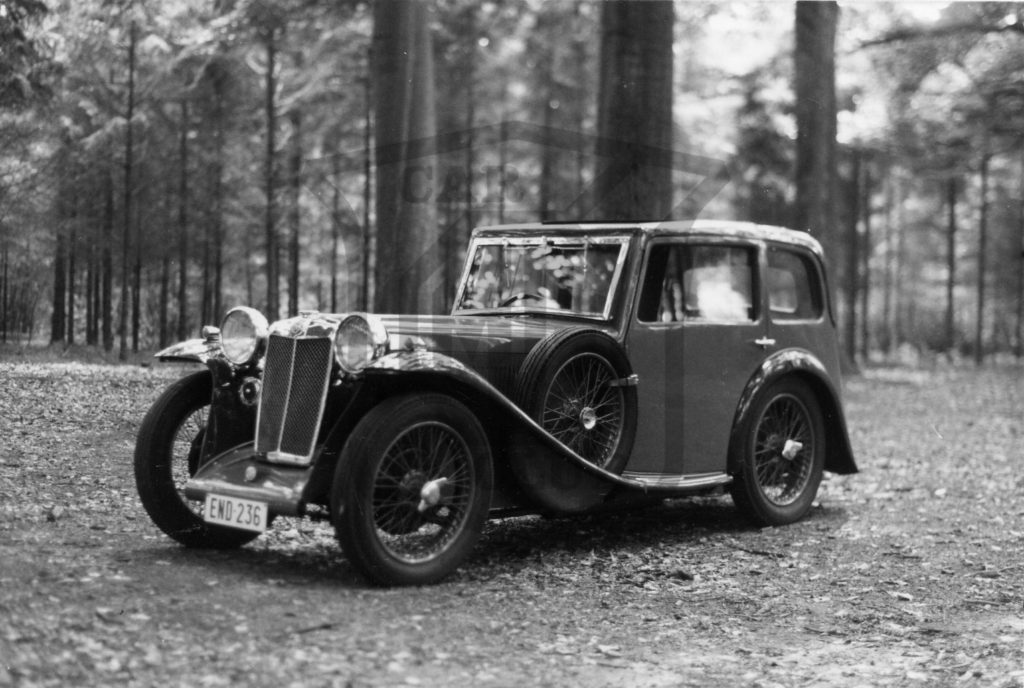
The 4-seater weighed 161/2 hundredweights, a 10% increase on the F-type 4-seater, but the L2 two-seater was ¾ cwt lighter, while the 2-door salonette and the Continental Coupe weighed in at over 17cwts.
A car was tested by “Autocar”, and a respectable top speed of 75mph achieved. A few cars competed on the track but this model made its name by taking the Team Prize in the 1933 Alpine Trial.
Chassis
This was the same as the F-type, but now sported the 12” brakes for better stopping (many of the F1s were retro fitted with 12” brakes). The steering was by Marles Weller, which used half hemispheres on the follower; this was not such a good steering box as the F-type’s Adamant recirculating wheel box, and needs constant attention to keep it in tip top condition. The centralised chassis oiling system was carried over from the F-type. This works pretty well if SAE 140 gear oil is used, but if grease has been used in the past, it clogs up the pipes and nothing gets through to where it is required. However the pipes can be made to work again by heating them up; the grease then becomes liquid and runs out. Hartford friction shock absorbers were still fitted, as the earlier cars; these are easily overhauled with new wooden discs and bushes.
Engine
The engine, known in the Factory as the “KC” was directly derived from the K-type engine; this produced 41 bhp, an improvement on the 37 bhp of the F-type, but the engine now revved to 5500 for this, as opposed to 4100 for the F-type, the car thus requiring a totally different driving style to get the best results from it. The head was the new MG cross flow unit, with twin three-branch exhaust manifolds on the near side, and twin 11/8” SU carburettors on the off side.
The carburettors were located more or less centrally between the front (and rear) groups of three cylinders. However later tests found that the centre two cylinders got more than their share of the fuel, so a later, ”Alpine”, manifold was developed with the carburettors moved further apart, and this configuration was used on the later KD and N-types engines. Some cars were fitted with triple carburettors, but they do not seem to have been a success.
The carburettor bowls were now the more reliable top feed variety. The principal improvement of the whole K- and L-type engines, was the introduction, at last, of an oil filter; this being mounted on the near side of the block with a disposable felt filter. If required these Tecalamit filters can be adapted to a full flow filter using a modern canister inside the original housing, thus preserving the correct look of the engine.
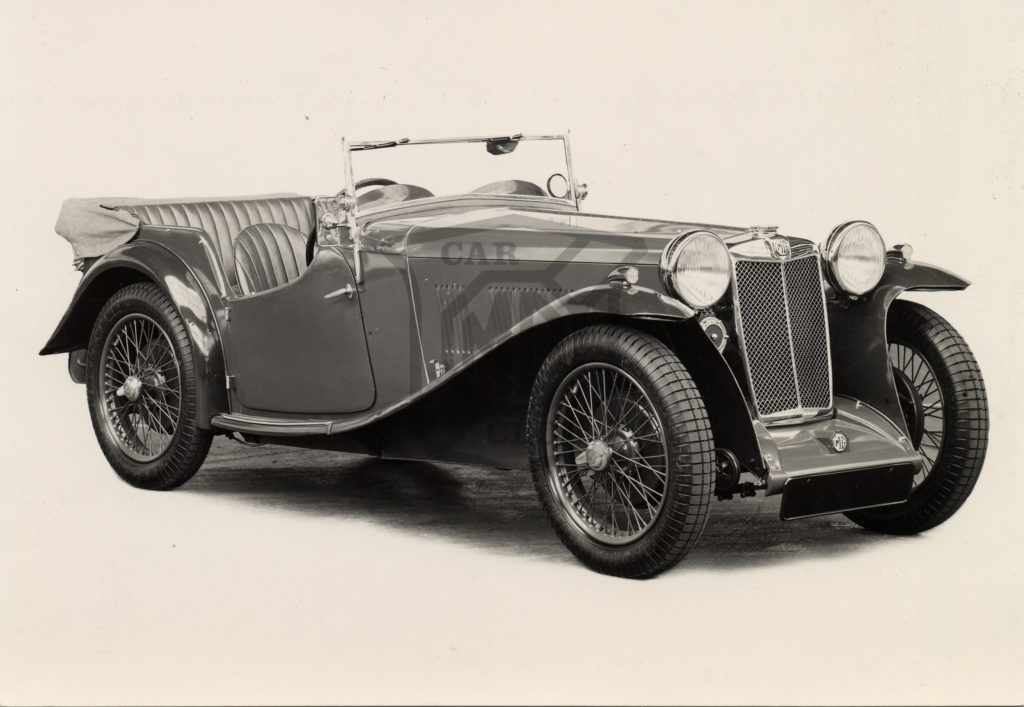
Gearbox
This was changed for a double plate Wolseley gearbox, and was very strong, if not so sweet to use as the ENV box of the F-type. 1st and 2nd gears were higher than the F-type. The gearbox now was mounted on its own crosstube, which formed the rear two-point mounting of the combined engine and gearbox unit; the front of the engine was still a single mounting formed by the extended nose piece which clamped under the chassis crosstube.
Back axle
This was largely unchanged, but now used a readily available 8/43 diff unit instead of the 9/43 of the F-type, due to the different performance characteristics of the revised engine. Lip oils seals were fitted to the wheel bearing carrier to prevent the back axle oil from getting on the brakes. There is a breather hole on the top of the back axle casing, which helps to reduce the build up of pressure in the back axle; this needs to be kept clear as it often gets painted over. Now that the power was increased the half shafts, being the same as the F- and J-types, are more susceptible to breaking, although stronger shafts are now available to overcome this problem.
Electrics
The headlights were still the 8” Rotax units, which are so difficult to find, and were mounted on brackets between the radiator and front wings, thus ensuring that the front of the car was much stiffer than before. The Petrolift petrol pump was superseded by the L-type SU pump, which is more reliable. The cut out/fuse box was bigger, but with the same number of fuses as the F-type. The battery was located in a chassis tray just behind the back axle where it was located on all Triple-M cars since the M-type. This kept it cool, but was difficult to access through the lift up rear panel when luggage was being carried. Many people now fit a cut out switch on the cross panel behind the front seats, which allows the battery to be disconnected quickly if there is an electrical fire or other electrical problem. It also is an effective anti-theft device.
Body
The body of the 2-seater was the same slab tank body as the 2-seater F-type (and the then current J-type), but with swept front wings and running boards, to stop mud being thrown up over the occupants. An Archimedes petrol gauge was fitted, with the dial on the top of the tank, which works but doesn’t necessarily give the correct reading, so many owners carry a calibrated dipstick with them. The L1, 4-seater, also had a slab tank at the rear, but was only half depth, and looked a bit awkward under the spare wheel. However the increased space for the rear passengers made this a popular version, with 258 being sold out of the total figure of 576 L-types.
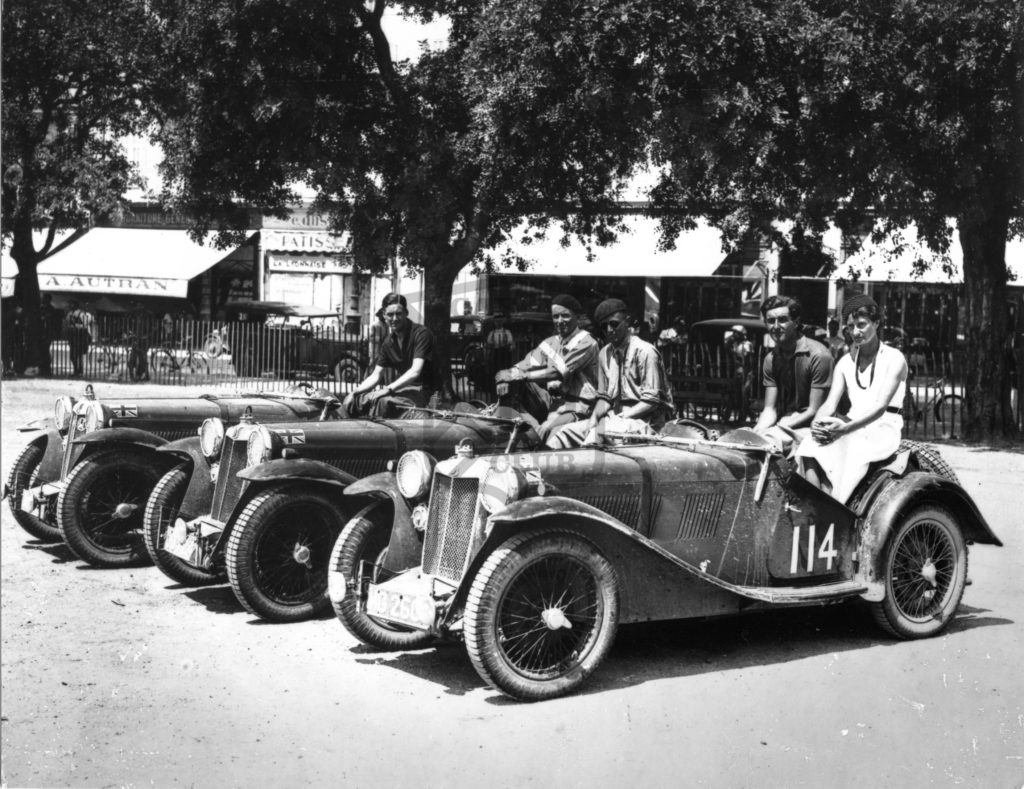
A sporting salonette was also a nice car, with a spare wheel mounted on the nearside wing, and a drop down panel at the rear to provide extra luggage room and access to the petrol tank; 97 of these were sold. The other factory body on these L-types was the Continental Coupe, which copied the style of some Bugatti saloons. This was a luxury 2-door 2-seater saloon with a spare wheel stowed away in a protruding boot. Kimber was so sure of its success that he ordered 100 bodies to be made, but it took over two years to sell them, it was thus dubbed “Kimber’s Folly”. About half were finished in black over yellow. 31 chassis were sent to other coachbuilders, such as Abbey and Carlton (for University Motors).
These timber frame bodies suffered from the usual rot, and rust, but the 2-seater bodies are easily replaced with new kits. The saloons are more expensive and difficult to repair, which is why so many have been rebuilt as 2-seaters; only a very few saloons remaining today.
Prices
Figures for the 4-seater in good condition will be over £20,000, with the popular 2-seater being nearer £30,000, since only 90 were made. The team cars used in the Alpine Trial will fetch 50% more, if they come on the market. The saloons are quite rare, and so their price will be up with the 4-seater, whilst the specialist coachwork cars will be over £25,000, due to their rarity.
Read part 4 to explore the last six cylinder Triple-M car, the N Type as well as touching on supercharging Replicas, Fakes and Copies.

 MG Car Club
MG Car Club